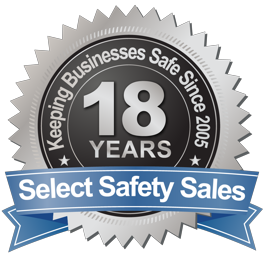Purpose: to prevent or minimize the entry of materials into the worker's body. Summary p.57
Selection of: based on the specific work and exposure conditions that will be encountered and anticipated level of risk.
When engineering controls and work practices are insufficient to eliminate exposure then PPE must also be utilized to address the remaining exposure potential.
OSHA 1910.1030(d)(3)(i)
"Provision. When there is occupational exposure, the employer shall provide, at no cost to the employee, appropriate personal protective equipment such as, but not limited to, gloves, gowns, laboratory coats, face shields or masks and eye protection, and mouthpieces, resuscitation bags, pocket masks, or other ventilation devices. Personal protective equipment will be considered "appropriate" only if it does not permit blood or other potentially infectious materials to pass through or reach the employee's work clothes, street clothes, undergarments, skin, eyes, mouth, or other mucous membranes under normal conditions of use and for the duration of time which the protective equipment will be used.
OSHA 1910.130(d)(3)(ii)
"Use. The employer shall ensure that the employee uses appropriate personal protective equipment...
OSHA 1910.1030(d)(3)(iii)
"Accessibility. The employer shall ensure that appropriate personal protective equipment in the appropriate sizes is readily accessible at the worksite or is issued to employees. Hypoallergenic gloves, glove liners, powderless gloves, or other similar alternatives shall be readily accessible to those employees who are allergic to the gloves normally provided."
OSHA 1910.1030(d)(3)(iv)
"Cleaning, Laundering and Disposal. The employer shall clean, launder, and dispose of personal protective equipment required by paragraphs (d) and (e) of this standard at no cost to the employee."
OSHA 1910.1030(d)(3)(v)
"Repair and Replacement. The employer shall repair or replace personal protective equipment as needed to maintain its effectiveness, at no cost to the employee."
What is appropriate?
"...PPE will be considered 'appropriate' only if it does not permit blood or OPIM to pass through to or reach the employee's work clothes, street clothes, undergarments, skin, eyes, mouth, or other mucous membranes under normal conditions of use and for the duration of time which the protective equipment will be used." Op Cit Summary p.57
The provision does not mean "potential for" but rather "reasonably anticipated" skin, eye, mucous membrane, or parenteral contact with blood or OPIM that may result from the performance of an employee's duties." p.57
If an item of clothing is intended to protect the employee from blood or OPIM occupational exposure it must be provided by the employer. p.58
Provision of PPE is based, therefore, upon the existence of occupational exposure which, by definition, is 'reasonably anticipated' skin, eye, mucous membrane, or parenteral contact with blood or other OPIM that may result from the performance of an employee's duties." Summary p.58
"The CDC recommends, therefore, that personal protective equipment should be used to protect not only skin...but also to prevent contamination of clothing." Summary p.61
"...the Agency (OSHA) has concluded that requiring provision of PPE to prevent work clothes, street clothes, undergarments, skin, eyes, mouth, or other mucous membranes from contact with blood or OPIM is justified and appropriate." Summary p.62
1910.1030(d)(3)(vii)
"All personal protective equipment shall be removed prior to leaving the work area."
"This provision will minimize migration of contamination beyond the work area to..." Summary p.69
1910.1030(d)(3)(viii)
"When personal protective equipment is removed it shall be placed in an appropriately designated area or container for storage, washing, decontamination or disposal."
"This ensures that the PPE will remain in a recognized area and helps ensure that it will be dealt with by employees who have been trained in the proper handling of these items." OpCit Summary p.69
"The employer must evaluate the task and the type of exposure expected and based upon this determination, select appropriate personal protective clothing. 'Appropriate' protective clothing must prevent contamination of an employee's skin or clothing by blood or OPIM." OpCit p.77





